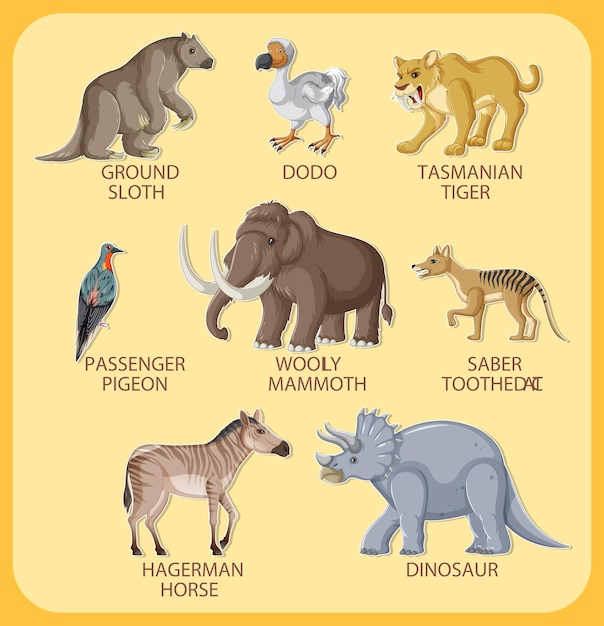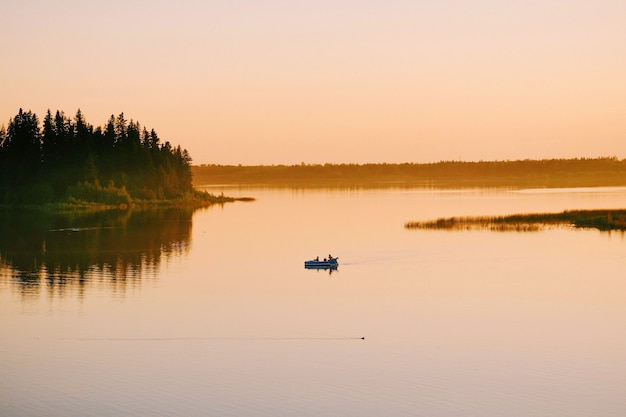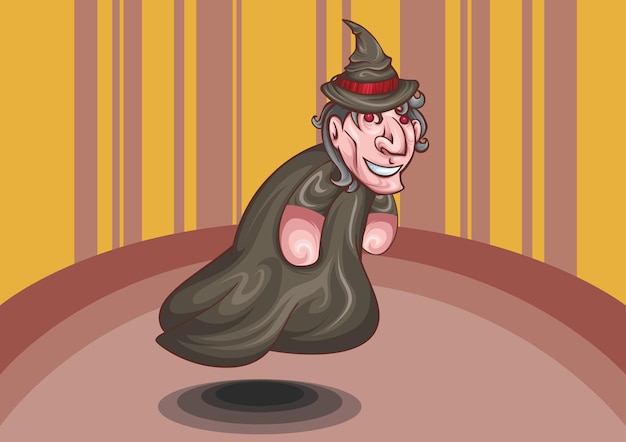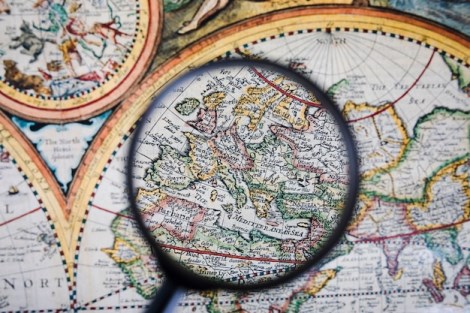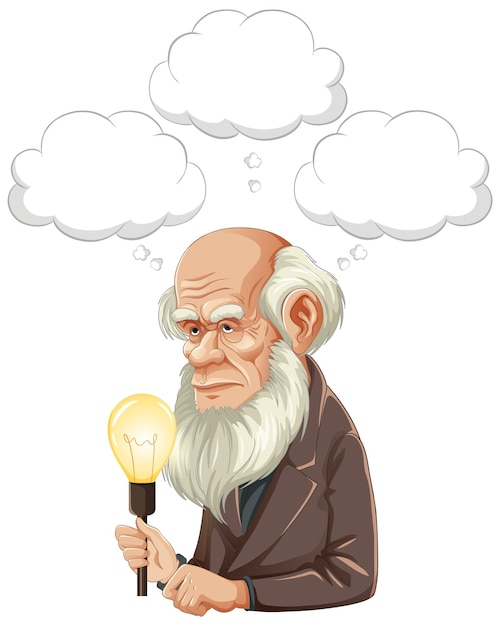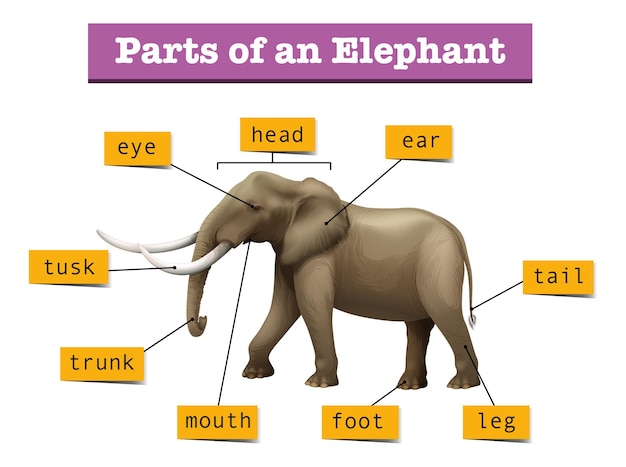O- Blood Type Facts
People with O- blood type are considered universal donors because their blood can be given to anyone in need.
O- blood type is the rarest blood type, accounting for approximately 7% of the world’s population.
O- blood type individuals have a higher risk of developing ulcers and stomach conditions.
O- blood type people are more prone to mosquito bites due to the specific enzymes present in their blood.
O- blood type individuals have a natural tendency to be more alert and focused.
Carrying an O- blood type gene can provide immunity against certain diseases.
People with O- blood type have a higher risk of developing thyroid issues.
O- blood type individuals typically have a strong immune system.
O- blood type people are believed to have a higher tolerance for pain.
Individuals with O- blood type are more prone to developing blood clotting disorders.
O- blood type individuals have a higher risk of developing gallstones.
People with O- blood type tend to have lower cholesterol levels.
Individuals with O- blood type have a higher risk of developing vision problems.
O- blood type people are more likely to have an athletic build.
O- blood type individuals have a lower risk of developing pancreatic cancer.
People with O- blood type are more likely to have a positive outlook on life.
O- blood type individuals have a higher risk of developing skin allergies.
People with O- blood type have high levels of stomach acid, making them less susceptible to food poisoning.
O- blood type individuals are more likely to have a lower risk of developing cardiovascular disease.
People with O- blood type are more likely to have a higher metabolism.
O- blood type individuals are more prone to stress-related health issues.
People with O- blood type have a lower risk of developing kidney stones.
O- blood type people tend to have a natural ability to handle high-stress situations.
O- blood type individuals have a higher risk of developing liver diseases.
People with O- blood type are more likely to be extroverted and outgoing.
O- blood type individuals have a higher risk of developing osteoporosis.
People with O- blood type are more likely to have a positive response to certain cancer treatments.
O- blood type individuals tend to have a longer lifespan on average.
People with O- blood type are more likely to have a higher fertility rate.
O- blood type individuals have a higher risk of developing autoimmune diseases.
People with O- blood type are more likely to have a higher resistance to certain viruses.
O- blood type individuals have a lower risk of developing dementia and Alzheimer’s disease.
People with O- blood type are more likely to have a higher sensitivity to caffeine.
O- blood type individuals have a higher risk of developing multiple sclerosis.
People with O- blood type are more likely to have a higher resistance to certain bacteria.
O- blood type individuals have a higher risk of developing allergies.
People with O- blood type are more likely to have a higher tolerance for spicy foods.
O- blood type individuals tend to have a faster recovery rate from certain surgeries.
People with O- blood type are more likely to have a higher resistance to certain parasites.
O- blood type individuals have a higher risk of developing gout.
People with O- blood type are more likely to have a higher resistance to certain fungal infections.
O- blood type individuals tend to have a stronger sense of intuition.
People with O- blood type have a lower risk of developing blood cancers.
O- blood type individuals have a higher risk of developing macular degeneration.
People with O- blood type are more likely to have a higher tolerance for cold temperatures.
Discovering Michelangelo – Fascinating Facts about the Renowned Artist
Michelangelo was born on March 6, 1475, in Caprese, Italy.
He is widely regarded as one of the greatest artists of all time.
Michelangelo was primarily a sculptor, but he also excelled in painting, architecture, and poetry.
His most famous works include the statue of David and the ceiling of the Sistine Chapel.
Michelangelo was trained as an apprentice to the master painter Domenico Ghirlandaio.
He often used his own face as a model for his statues.
Michelangelo was commissioned by Pope Julius II to create his tomb, but the project was never fully realized.
The statue of David took three years to complete and stands at over 17 feet tall.
Michelangelo was known for his perfectionism and would sometimes destroy his own works if he was not satisfied with them.
He was an avid poet and wrote numerous sonnets throughout his life.
Michelangelo’s work had a profound impact on the development of Western art.
He was praised for his ability to capture the human form with incredible detail and skill.
Michelangelo’s artistic talent was evident from a young age, and his skill quickly surpassed that of his peers.
His father wanted him to pursue a career in business, but he convinced his father to let him study art instead.
Michelangelo was deeply religious and his faith often influenced his art.
Despite his success as an artist, Michelangelo considered himself first and foremost a sculptor.
He had a contentious relationship with fellow renaissance artist Raphael, often competing with him for commissions.
Michelangelo’s painting on the Sistine Chapel ceiling took approximately four years to complete.
He was known for his use of vibrant colors and dramatic depiction of biblical scenes in his paintings.
Michelangelo’s work was so revered that he was often referred to as Il Divino, meaning the divine one.
He was known for his intense work ethic, often working for many hours without breaks.
Michelangelo’s sculptures are characterized by their dynamic poses and emotional expressiveness.
The Pieta, located in St. Peter’s Basilica in Rome, is one of his most famous marble sculptures.
He believed that the sculptures he created already existed within the stone, and his job was to release them.
Michelangelo was given the honorary title of Il Magnifico by the Medici family.
He lived for many years in Florence, where he created some of his most celebrated works.
Michelangelo painted over 300 figures on the Sistine Chapel ceiling, including biblical prophets and scenes from the Old Testament.
The Last Judgment, painted on the altar wall of the Sistine Chapel, is another one of his iconic works.
His paintings often depicted muscular and idealized human forms, reflecting the influence of classical art.
Michelangelo’s work had a lasting impact on Renaissance politics and culture, as it was often commissioned by powerful figures.
He was not only an artist but also an influential architect, designing buildings such as the Medici Chapel in Florence.
Michelangelo’s architectural designs often incorporated elements of classical Roman architecture.
His style evolved throughout his career, reflecting the changing times and his own artistic growth.
Michelangelo’s talent was recognized and celebrated during his lifetime, and he became a prominent figure in Italian society.
He had a complex personality, often described as moody and difficult to work with.
Despite his sometimes difficult demeanor, Michelangelo had a close circle of friends and patrons who supported him throughout his career.
Many of his greatest works are still housed in Italy today, attracting millions of visitors each year.
Michelangelo’s artistic legacy continues to inspire and influence artists around the world.
He left behind a vast collection of drawings, some of which offer insights into his artistic process and techniques.
Michelangelo’s life and work were influenced by the political turmoil of his time, including conflicts between rival states and power struggles within the Catholic Church.
His artwork was often used as a symbol of civic pride and cultural identity for the cities in which he worked.
The physical demands of sculpting often took a toll on Michelangelo’s health, leading to various ailments later in life.
He continued to work on his artwork until his death at the age of 88.
Michelangelo is buried in Florence, where he requested to be laid to rest in the Basilica di Santa Croce.
His influence can still be seen in contemporary art, as artists continue to study and draw inspiration from his innovative techniques and timeless subject matter.
Facts about MLK Jr
MLK Jr. was born on January 15, 19
2. MLK Jr. was a prominent leader in the American civil rights movement.
MLK Jr. was an advocate for nonviolent civil disobedience.
MLK Jr. delivered his famous I Have a Dream speech in 1963.
MLK Jr.’s efforts in the civil rights movement led to the passing of the Civil Rights Act of 1964.
MLK Jr. was awarded the Nobel Peace Prize in 1964.
MLK Jr. was assassinated on April 4, 1968.
MLK Jr. was influenced by the teachings of Mahatma Gandhi.
MLK Jr. led the Montgomery Bus Boycott in 1955.
MLK Jr. graduated from Morehouse College at the age of
MLK Jr. received a Ph.D. in theology from Boston University.
MLK Jr. played a significant role in the Selma to Montgomery marches.
MLK Jr. founded the Southern Christian Leadership Conference (SCLC) in 1957.
MLK Jr. was inspired by his father, who was a preacher.
MLK Jr. advocated for equality and justice for all, regardless of race.
MLK Jr. organized the March on Washington for Jobs and Freedom in 1963.
MLK Jr. believed in the power of love and forgiveness.
MLK Jr. was influenced by the ideas of Henry David Thoreau.
MLK Jr. promoted economic boycotts as a form of protest.
MLK Jr. was a key figure in the successful desegregation of buses in Montgomery, Alabama.
MLK Jr. was jailed multiple times for his activism.
MLK Jr. delivered over 2,500 speeches in his lifetime.
MLK Jr. wrote several books, including Stride Toward Freedom and Where Do We Go from Here: Chaos or Community?
MLK Jr.’s birthday is celebrated as a national holiday in the United States.
MLK Jr. was influenced by the ideas of theologian Reinhold Niebuhr.
MLK Jr. advocated for voting rights for African Americans.
MLK Jr. believed in the power of education to combat racism and discrimination.
MLK Jr. was known for his eloquence and powerful oratory skills.
MLK Jr. was a vegetarian and promoted nonviolence in all aspects of life.
MLK Jr. received inspiration from the works of Mohandas Karamchand Gandhi.
MLK Jr. organized the Birmingham campaign in 1963, which aimed to end segregation in one of America’s most racially divided cities.
MLK Jr. traveled extensively, spreading his message of equality and justice.
MLK Jr. helped to organize the March on Washington, where he delivered his iconic I Have a Dream speech.
MLK Jr.’s activism and leadership paved the way for the passage of the Voting Rights Act in 1965.
MLK Jr. believed in the power of peaceful protests and civil disobedience to bring about change.
MLK Jr. was arrested numerous times for his participation in peaceful protests.
MLK Jr.’s impact on American society continues to be felt today, particularly in the ongoing fight for racial justice.
MLK Jr.’s legacy extends beyond the United States, as his principles of nonviolence and equality resonate globally.
MLK Jr.’s work and sacrifice made him an iconic figure, inspiring countless others to fight for justice and equality.
MLK Jr.’s message of love, understanding, and unity continues to be relevant in today’s divided world.
MLK Jr. believed in the power of individuals to make a difference and encouraged people to take action.
MLK Jr.’s leadership during the civil rights movement helped bring attention to the systemic injustices faced by African Americans.
MLK Jr. was known for his commitment to nonviolence, even in the face of harsh opposition and violence.
MLK Jr.’s peaceful protests and demonstrations showed the world the strength of unity and solidarity.
MLK Jr.’s untimely death left a void in the civil rights movement, but his teachings and principles continue to inspire generations to fight for equality and justice.
Martin Luther King Jr Fun Facts
Martin Luther King Jr. was born on January 15, 1929, in Atlanta, Georgia.
He was the second child of Reverend Martin Luther King Sr. and Alberta Williams King.
King skipped two grades and entered college at the age of
4. He earned a bachelor’s degree in sociology from Morehouse College in Atlanta.
King entered Crozier Theological Seminary in Pennsylvania, where he became interested in the works of Mahatma Gandhi.
He married Coretta Scott, a talented singer, on June 18, 1953.
King and his wife had four children: Yolanda, Martin Luther King III, Dexter, and Bernice.
King received his doctorate in systematic theology from Boston University in 1955.
He led the Montgomery Bus Boycott in 1955 after Rosa Parks was arrested for refusing to give up her seat on a bus.
King delivered his famous I Have a Dream speech at the Lincoln Memorial in Washington, D.C., on August 28, 1963.
He received the Nobel Peace Prize in 1964 for his nonviolent movement against racial injustice.
King was the youngest recipient of the Nobel Peace Prize at the age of
He was arrested 29 times for his participation in civil rights protests.
King was influenced by the teachings of Henry David Thoreau and his concept of civil disobedience.
He led the Selma to Montgomery marches in 1965 to demand voting rights for African Americans.
King met with President John F. Kennedy to discuss civil rights issues.
He was a strong advocate for economic equality and spoke out against poverty and inequality.
King founded the Southern Christian Leadership Conference (SCLC) in 1957.
He delivered over 2,500 speeches during his lifetime.
King wrote five books, including Stride Toward Freedom and Why We Can’t Wait.
He was instrumental in the passing of the Civil Rights Act of 1964 and the Voting Rights Act of 1965.
King’s home in Montgomery, Alabama, is now a national historic site.
He was inspired by Gandhi’s nonviolent resistance and incorporated it into the civil rights movement.
King advocated for the idea of a beloved community where all races and classes would live together.
He led the Chicago Open Housing Movement in 1966 to fight against housing segregation.
King’s mother was also assassinated, just six years after his own assassination.
He was dedicated to promoting nonviolence as a means of achieving social change.
King’s famous Letter from Birmingham Jail was written in response to criticism from local white clergymen.
He delivered his last speech, I’ve Been to the Mountaintop, the day before his assassination.
King’s assassin, James Earl Ray, was apprehended in London, England.
On April 4, 1968, King was shot and killed on the balcony of the Lorraine Motel in Memphis, Tennessee.
He often quoted the Bible in his speeches and incorporated religious themes into his activism.
King was posthumously awarded the Presidential Medal of Freedom in 1977.
Many cities in the United States have streets named after Martin Luther King Jr. to honor his legacy.
His birthday became a national holiday in the United States in 1986.
King’s life and work are celebrated annually on Martin Luther King Jr. Day, the third Monday in January.
He is the only non-president to have a memorial on the National Mall in Washington, D.C.
King’s I Have a Dream speech is considered one of the most important speeches in American history.
His famous quote, Darkness cannot drive out darkness; only light can do that. Hate cannot drive out hate; only love can do that, is still widely referenced today.
King’s work laid the foundation for future civil rights movements and remains influential to this day.
His childhood home in Atlanta became a National Historic Site in 1980.
King’s autopsy revealed that he had the heart of a 60-year-old man, likely due to the stress he endured during his life.
A memorial to Martin Luther King Jr. is currently being built on Boston Common.
King’s struggle for equality and justice resonates with people around the world, making him a global symbol of peace and social change.
King’s legacy continues to inspire people to fight for justice and equality for all.
Fascinating Facts about Mammals
Mammals are the only animals with hair or fur.
Dolphins are mammals, not fish.
Bats are the only mammals that can fly.
Elephants are the largest land mammals.
Humans are mammals too!
Whales are the largest mammals on Earth.
Giraffes are the tallest mammals.
Koalas sleep for an average of 20 hours a day.
The eyesight of cats is superior to humans’.
Platypus is a unique mammal that lays eggs.
Beavers have transparent eyelids that allow them to see underwater.
The blue whale’s tongue can weigh as much as an elephant.
A group of dolphins is called a pod.
Kangaroos can jump up to three times their own height.
Cows have four stomachs.
Squirrels can remember the locations of thousands of nuts.
Wolves have a sense of smell 100 times more powerful than humans’.
Bats use echolocation to navigate and find their prey.
Pandas have a thumb-like bone that helps them grip bamboo.
Hippos can hold their breath for up to five minutes.
Giraffes have the same number of neck bones as humans.
The heart of a blue whale is the size of a small car.
Hedgehogs can roll into a spiky ball for protection.
Gorillas have unique nose prints, just like humans have fingerprints.
Otters hold hands while sleeping so they don’t drift apart.
Dolphins can recognize themselves in a mirror.
Cheetahs are the fastest land mammals, reaching speeds up to 60 mph.
Polar bears have black skin, even though their fur appears white.
Sloths are the slowest mammals, moving at a top speed of 0.15 mph.
Whales communicate with complex songs that can travel for miles.
Rhinoceros horns are made of compressed hair.
Chimpanzees have similar DNA to humans, sharing about 98% of our genetic code.
Female kangaroos can pause the development of their embryos during times of drought.
Dolphins give birth to live young, just like humans do.
Female elephants have the longest pregnancy of all mammals, lasting 22 months.
Monkeys use tools, such as sticks, to help them eat or gather food.
The blue whale’s tongue can weigh as much as an elephant.
Male lions have a distinct mane that makes them easily recognizable.
Bats play a crucial role in pollination and seed dispersal.
Horses have a large range of facial expressions, similar to humans.
Moose have a flap of skin called a bell that hangs beneath their throat.
Bearded seals have mustaches made of whiskers.
The echidna is one of only two egg-laying mammals in the world.
Zebras have unique stripe patterns, similar to a human’s fingerprint.
The glands in skunks produce a strong-smelling liquid used for defense.
Mako Shark Facts
Mako sharks are known for being the fastest-swimming sharks in the ocean.
Mako sharks have incredible agility and are capable of making sharp turns in an instant.
These sharks have a streamlined body that helps them slice through the water effortlessly.
Mako sharks have a unique body temperature regulation system, enabling them to maintain a higher body temperature than the surrounding water.
Mako sharks are also known as blue pointers due to their blue-colored bodies and elongated snouts.
These sharks possess an incredible biting force, capable of taking down large prey with one swift motion.
Mako sharks have the ability to leap out of the water, sometimes reaching heights of up to 20 feet.
Mako sharks are highly migratory and can travel thousands of miles in search of food and breeding grounds.
These sharks have a lifespan of up to 30 years in the wild.
Mako sharks are known to be voracious predators, preying on a variety of fish and even marine mammals.
Despite their reputation as fierce hunters, Mako sharks are not considered a significant threat to humans.
Mako sharks have long, slim teeth that are designed for cutting through prey with minimal resistance.
These sharks possess a unique ability to regulate their blood flow, allowing them to control their body temperature efficiently.
Mako sharks have a complex social structure, often forming loose groups or schools.
The eyesight of Mako sharks is exceptional, enabling them to spot potential prey from a great distance.
Mako sharks are known for their incredible endurance, with some individuals capable of swimming for days without rest.
These sharks are found in both temperate and tropical waters, making them highly adaptable to various habitats.
Mako sharks are targeted by commercial fisheries, primarily for their meat and fins.
The liver of a Mako shark can account for up to 25% of its total body weight, providing buoyancy and a high-energy food source.
Mako sharks have been observed displaying unique hunting behaviors, such as circling and herding their prey before attacking.
Mako sharks are curious creatures and are often attracted to boats or underwater objects.
These sharks are capable of reaching speeds of up to 45 mph, making them one of the fastest swimmers in the animal kingdom.
Mako sharks have a countershading coloration, with a darker upper body and a lighter underside, helping them blend in with their surroundings.
Mako sharks have an acute sense of smell, allowing them to detect even tiny amounts of blood in the water from great distances.
These sharks have been recorded diving to depths of over 500 meters (1,640 feet).
Mako sharks are ovoviviparous, meaning that they give birth to live young after carrying the eggs internally.
The gestation period for Mako sharks can range from 15 to 18 months.
Mako sharks have been known to breach the water surface during courtship displays or territorial disputes.
These sharks possess serrated teeth, which help them grip and tear their prey apart.
Mako sharks are apex predators, meaning that they have no natural predators in their ecosystem.
Mako sharks have a highly efficient circulatory system, enabling them to deliver oxygen to their muscles during high-speed pursuits.
The distinctive shape of a Mako shark’s dorsal fin allows it to stabilize its body while swimming at high speeds.
These sharks are known to have an aggressive and fearless nature, often attacking multiple times when hunting.
Mako sharks have the ability to regulate their buoyancy by adjusting the amount of gas in their liver.
Mako sharks have a reputation for being one of the most challenging species to catch as a game fish.
These sharks have a powerful sense of hearing, capable of detecting low-frequency sounds and vibrations.
Mako sharks play a vital role in marine ecosystems by controlling the populations of their prey species.
The teeth of Mako sharks are constantly replaced, with new teeth growing in front of the old ones.
These sharks have a keeled caudal (tail) fin, which helps them swim efficiently and change direction quickly.
Mako sharks are known to exhibit aggressive behavior when caught on a fishing line, often leaping and thrashing in an attempt to escape.
These sharks have a streamlined body covered in dermal denticles, which reduce drag and turbulence while swimming.
Mako sharks are considered one of the most sought-after species for trophy sport fishing.
The population of Mako sharks has been declining rapidly due to overfishing and bycatch in commercial fisheries.
These sharks are capable of traveling at such high speeds that they can breach the surface of the water entirely.
Mako sharks possess a unique hunting technique called spy hopping, where they elevate their heads above the water surface to get a better view of their surroundings.
Fascinating Facts about Mae Jemison
Mae Jemison was born on October 17, 1956, in Decatur, Alabama.
She grew up in Chicago, Illinois, where she developed a love for science and space.
Mae Jemison attended Stanford University at the age of 16 and earned a Bachelor of Science degree in Chemical Engineering.
Jemison obtained her medical degree from Cornell University in 1981.
In 1983, she joined the Peace Corps and served as a medical officer until 1985.
Mae Jemison was selected as an astronaut candidate by NASA in 1987.
On September 12, 1992, Jemison became the first African-American woman to travel into space.
She flew aboard the Space Shuttle Endeavour and spent over a week in space.
During her space mission, Jemison conducted experiments on weightlessness and motion sickness.
Mae Jemison left NASA in 1993 to pursue other interests, including promoting STEM education.
She founded the Jemison Group, which focuses on researching, developing, and implementing advanced technologies.
Mae Jemison is a strong advocate for diversity and inclusion in the STEM fields.
She believes that everyone should have the opportunity to pursue their passion, regardless of their background.
Jemison has received numerous awards and honors for her contributions to science and education.
She was inducted into the National Women’s Hall of Fame in 1993.
Mae Jemison has appeared in television shows like Star Trek: The Next Generation and 20/
She has also authored several books on science and space exploration.
Jemison is a talented dancer and has trained in various dance styles, including ballet and modern dance.
She is passionate about integrating arts and sciences to foster creativity and innovation.
Mae Jemison has traveled to more than 50 countries, promoting cultural exchange and scientific collaboration.
She is a strong believer in the power of imagination and encourages people to think beyond boundaries.
Jemison often speaks about the importance of taking risks and embracing failure as part of the learning process.
She has been a guest lecturer at top universities and spoken at TED conferences.
Mae Jemison is a board member of several organizations, including the World Sickle Cell Foundation and the Dorothy Jemison Foundation for Excellence.
She is dedicated to improving healthcare access and quality in underserved communities.
Jemison is an active supporter of initiatives that aim to address climate change and promote sustainable living.
She emphasizes the need for a global perspective in solving the world’s most pressing challenges.
Mae Jemison believes that science education should be hands-on and interactive to foster curiosity and critical thinking.
She encourages students to follow their passions and pursue careers that align with their interests.
Jemison has been honored with multiple doctorate degrees from prestigious universities.
She has been recognized as an influential figure in the fields of science, space, and social impact.
Mae Jemison’s achievements have inspired countless young girls and minorities to pursue careers in STEM.
She is involved in mentorship programs and initiatives that support underrepresented groups in the sciences.
Jemison believes in the power of collaboration and teamwork to tackle complex problems.
She often draws parallels between scientific discoveries and the arts, emphasizing the interconnectedness of different disciplines.
Mae Jemison is a firm believer in lifelong learning and encourages individuals to never stop seeking knowledge.
She is actively involved in initiatives that promote sustainable development and space exploration.
Jemison has been recognized as a leader in the field of technology and innovation.
She emphasizes the importance of technological advancements in improving the well-being of communities worldwide.
Mae Jemison is a sought-after keynote speaker at conferences and events around the globe.
She has been featured on various magazine covers and named one of the most influential people in the world by TIME magazine.
Jemison serves as a role model for aspiring scientists, astronauts, and entrepreneurs.
She is committed to fostering a more inclusive and equitable society through her work and advocacy.
Mae Jemison’s legacy extends far beyond her achievements in space, as she continues to make a significant impact on the world.
She is proof that diversity, perseverance, and passion are essential ingredients for success in any field.
Interesting Facts about Lyndon B. Johnson
Lyndon B. Johnson was the 36th President of the United States.
He was born on August 27, 1908, in Stonewall, Texas.
Johnson had a deep passion for education and worked to improve it during his presidency.
He was known for his Great Society program, which aimed to eliminate poverty and racial injustice.
Johnson is the only president to have worn custom-made shoes during his inauguration.
He served as Vice President under President John F. Kennedy and assumed the presidency after Kennedy’s assassination.
Johnson signed the Civil Rights Act of 1964, which outlawed racial segregation and discrimination.
He also signed the Voting Rights Act of 1965, which aimed to protect the voting rights of African Americans.
Johnson was a dog lover and had several pets, including his beagles named Him and Her.
He was known for his larger-than-life personality and colorful language.
Johnson was an avid reader and had an extensive book collection.
He was the first president to have a telephone in the Oval Office.
Johnson was known for his skill in arm-twisting and persuasion, which helped him pass several important pieces of legislation.
He had a strong Texas accent and used it to his advantage during his political career.
Johnson was a decorated World War II veteran and served in the Navy.
He became President at the age of 55, making him one of the younger presidents in history.
Johnson was the first president to appoint an African American justice to the Supreme Court, Thurgood Marshall.
He was known for his love of barbecues and often hosted elaborate cookouts at the White House.
Johnson had a habit of holding meetings and discussions while sitting on the toilet, a strategy known as the Johnson treatment.
He was committed to environmental conservation and signed several acts aimed at protecting natural resources.
Johnson was an active supporter of the space program and played a significant role in the early Apollo missions.
He owned a ranch called the LBJ Ranch in Texas, where he spent a significant amount of his time.
Johnson signed the Elementary and Secondary Education Act, which provided federal funding for education to schools in need.
He was known for his love of driving fast cars and owned several high-performance vehicles.
Johnson was a skilled poker player and often used the game as a way to bond with colleagues and negotiate deals.
He was a master of legislative strategy and knew how to get things done in Congress.
Johnson was known for his dedication to public service and often worked long hours to fulfill his duties.
He signed the Medicare Act into law, which provided health insurance for elderly Americans.
Johnson was a champion of the arts and worked to promote cultural initiatives during his presidency.
He was the first president to appoint a Hispanic member to his cabinet, picking Henry Cisneros as Secretary of Housing and Urban Development.
Johnson was skilled at cultivating personal relationships with foreign leaders, which helped him navigate through international crises.
He signed the Gun Control Act of 1968, which aimed to regulate the sale and possession of firearms.
Johnson loved wearing cowboy hats and often sported them during public appearances.
He was a firm believer in the power of government intervention to solve social and economic problems.
Johnson’s presidency saw significant advancements in civil rights legislation and policies.
He was the last president to serve during the turbulent 1960s, a decade marked by social and political upheaval.
Johnson had a strong belief in the importance of a strong military and significantly increased defense spending during his presidency.
He was a skilled orator and was able to rally support and inspire voters with his speeches.
Johnson was the first president to receive the American Politician of the Year award.
He signed the Higher Education Act, which expanded federal financial aid for college students.
Johnson was known for his love of hunting and often went on hunting trips during his free time.
He actively pushed for the creation of national parks and signed several bills to protect these natural treasures.
Johnson was a champion of rural electrification and worked to bring electricity to rural areas across the country.
He signed the Truth in Packaging Act, which required goods to be labeled accurately and honestly.
Johnson’s presidency saw significant advancements in the space program, with the historic Apollo 11 moon landing taking place during his time in office.
Facts about Libya – Unveiling the Land of Ancient Civilizations and Vast Deserts
Libya is the fourth largest country in Africa.
Libya has the longest coastline in Africa, stretching over 1,800 kilometers.
The official language of Libya is Arabic.
Libya has a rich historical heritage, with evidence of human habitation dating back to at least 8,000 BC.
The ancient city of Leptis Magna, located in Libya, was one of the most important trading cities in the Roman Empire.
Libya is home to the largest desert in the world, the Sahara Desert.
The Great Man-Made River, an artificial river system, supplies fresh water from underground aquifers to cities across Libya.
Libya is known for its rich oil reserves, making it a major player in the global oil industry.
Libya is home to a diverse range of ethnic groups, including Arabs, Berbers, Tuaregs, and Tebu.
Libya gained its independence from Italy in 195
Libya has a Mediterranean climate, with hot summers and mild winters.
The Libyan flag consists of three horizontal stripes – red, black, and green – with a white star and crescent in the center.
The capital city of Libya is Tripoli, which is also the largest city in the country.
Libya has a population of approximately 6.8 million people.
Libyan cuisine is known for its use of spices, especially in dishes like couscous and bazeen.
The ancient ruins of the city of Sabratha, a UNESCO World Heritage Site, are located in western Libya.
Gaddafi Stadium, one of the largest sports stadiums in Africa, is located in Benghazi, Libya.
Libya is home to several ancient rock art sites, showcasing prehistoric drawings and carvings.
The currency of Libya is the Libyan dinar.
Libya has a high literacy rate, with a strong emphasis on education.
The Sahara Desert covers about 90% of Libya’s land area.
The Martyrs’ Square in Tripoli is an important site for political rallies and demonstrations.
Libya has nine UNESCO World Heritage Sites, including the archaeological sites of Cyrene and Ghadamès.
Libyan traditional music is known for its rhythmic beats and poetic lyrics.
The traditional clothing of Libyan women is called a thobe or jalabiya.
Libya has a strong tradition of storytelling, with folk tales and oral histories passed down through generations.
The Libyan desert is dotted with numerous oasis towns, providing water and habitat for both humans and wildlife.
Libyans are known for their hospitality and welcoming nature towards guests.
Traditional Libyan weddings are colorful and festive affairs, often lasting several days.
Libya is home to a significant number of archaeological sites from the Greek and Roman periods.
Libya has a diverse wildlife population, including species like desert foxes, gazelles, and various bird species.
The Green Mountains, located in northeastern Libya, are known for their scenic beauty and hiking trails.
Libyan literature has a rich tradition, with notable authors like Ibrahim al-Koni and Hisham Matar.
The traditional sport of horse racing, known as sousa, is popular in Libya.
Libya has a rich tradition of handicrafts, including pottery, weaving, and leatherwork.
The Libyan desert is popular among adventure tourists for activities like dune bashing and camel trekking.
Libya has a variety of traditional dances, often performed at weddings and cultural festivals.
The traditional Libyan diet consists of locally sourced ingredients like couscous, lamb, olives, and dates.
The ancient city of Ghadames, known as the pearl of the desert, is famous for its unique architecture and traditional festivals.
Libya has a traditional coffee culture, with coffee houses being important social gathering places.
The Aouzou Strip, a region in northern Chad and southern Libya, has been a subject of territorial dispute between the two countries.
Libya has a varied landscape, including mountains, coastal plains, and desert dunes.
The Tadrart Acacus, a mountain range located in southwestern Libya, is famous for its rock art and prehistoric settlements.
Libyan culture is influenced by neighboring countries like Tunisia, Egypt, and Algeria, resulting in a unique blend of traditions and customs.
Libya has a rich tradition of oral poetry, with skilled poets known as hakawatis sharing their verses with audiences.
Interesting Facts About LeBron James
Lebron James is often referred to as King James due to his dominance in basketball.
Despite being born in Akron, Ohio, Lebron James has gained fame and recognition worldwide.
Lebron James became the youngest player in NBA history to reach 30,000 career points.
He has won NBA championships with three different teams: Miami Heat, Cleveland Cavaliers, and Los Angeles Lakers.
Standing at 6’9 and weighing 250 pounds, Lebron James is a formidable force on the basketball court.
Lebron James is known for his extraordinary athleticism and ability to make jaw-dropping dunks.
He has been named the NBA Finals MVP four times.
Lebron James is not just a basketball player; he is also an influential philanthropist, investing in initiatives for education and youth.
He has appeared in multiple movies, including Space Jam: A New Legacy.
Lebron James is a trendsetter when it comes to fashion, often seen wearing unique and stylish outfits.
Off the court, Lebron James enjoys spending time with his family and documenting his daily life on social media.
He has been a vocal advocate for social justice and has used his platform to bring attention to important issues.
Lebron James is an avid sports fan himself, often seen attending football and baseball games.
He has an impressive collection of luxury cars, including a Lamborghini Aventador and a Porsche 911 Turbo S.
Lebron James has his own brand of sneakers called Lebron James Shoes, which are highly sought after by basketball enthusiasts.
He is one of the most marketable athletes in the world, with numerous endorsement deals and sponsorships.
Lebron James has been named to the All-NBA First Team a record 13 times.
He has been selected as an NBA All-Star 17 times, showcasing his consistent excellence in the sport.
Lebron James has a close friendship with fellow NBA player Dwyane Wade, and they have been nicknamed the Banana Boat Crew by fans.
He has a signature move called the Lebron James chase-down block, where he sprints from behind to block an opponent’s shot.
Lebron James has a strong work ethic and is known for his dedication to improving his skills.
He has an enormous social media following, with millions of fans across various platforms.
Lebron James has achieved a triple-double (scoring double digits in three statistical categories) over 100 times in his career.
He is the youngest player to score 40 points in an NBA Finals game.
Lebron James is a talented passer and is often praised for his court vision and ability to create scoring opportunities for his teammates.
He has represented the United States in international basketball competitions, winning two Olympic gold medals.
Lebron James is respected by his peers and has been voted as the player other NBA players would most like to play alongside.
He has been featured on the cover of Sports Illustrated numerous times throughout his career.
Lebron James holds several records, including the most points scored in NBA playoff history.
He has his own production company called SpringHill Entertainment, which has produced hit TV shows and movies.
Lebron James is passionate about music and even worked as an A&R consultant for a music label.
He is known for his infectious smile and positive attitude, often bringing a sense of joy to the game.
Lebron James has been praised for his basketball IQ, being able to read and react to the game at a high level.
He has a strong bond with his mother, Gloria James, who raised him as a single mother.
Lebron James has a charitable foundation called the Lebron James Family Foundation, dedicated to supporting education and empowering children.
He has appeared on several talk shows and late-night programs, showcasing his charismatic personality.
Lebron James has a strong sense of community, often giving back to his hometown of Akron by providing resources and opportunities for local youth.
He is a role model for aspiring athletes, showing that hard work and dedication can lead to great success.
Lebron James has a unique pregame ritual of tossing chalk into the air, which has become iconic in the basketball world.
He is known for his clutch performances, often stepping up in crucial moments to lead his team to victory.
Lebron James has a competitive rivalry with fellow NBA player Kevin Durant, with their matchups often hyped as must-see games.
He has been a part of dominant NBA superteams throughout his career, showcasing his ability to adapt and succeed in different team environments.
Lebron James has a strong presence in the media, with his every move and decision often being analyzed and scrutinized.
He has a strong partnership with Nike and has released numerous signature sneakers that are highly coveted by sneaker enthusiasts.
Lebron James is a true basketball legend, leaving a lasting impact on the sport and inspiring generations of young athletes.
Fascinating Facts about Lake Michigan
Lake Michigan is one of the five Great Lakes in North America.
Lake Michigan is the second largest of the Great Lakes by volume.
The surface area of Lake Michigan is approximately 22,404 square miles.
Lake Michigan has a shoreline that spans around 1,640 miles.
The lake is known for its beautiful sandy beaches.
Lake Michigan is home to numerous shipwrecks, making it a popular destination for divers.
The lake provides habitat for a variety of fish species such as salmon, trout, bass, and perch.
Lake Michigan’s water is primarily sourced from precipitation and runoff.
The lake is a major source of drinking water for cities like Chicago and Milwaukee.
Lake Michigan experiences seasonal water temperature variations, with warmer temperatures in the summer and colder temperatures in the winter.
The lake has an average depth of 279 feet.
Lake Michigan reaches its maximum depth of 923 feet near Milwaukee.
Lake Michigan’s water has a bluish-green color due to the presence of algae.
The lake freezes during winter, creating a winter wonderland for ice fishing and other activities.
The Lake Michigan Circle Tour is a scenic road trip that encompasses the entire shoreline of the lake.
Lake Michigan offers numerous opportunities for boating, sailing, and kayaking.
The lake provides a vital habitat for migratory birds, including ducks and geese.
Lake Michigan’s shoreline is dotted with picturesque lighthouses.
The lake’s water levels can fluctuate significantly, impacting coastal erosion and beach accessibility.
Lake Michigan’s dunes, like Sleeping Bear Dunes, offer stunning panoramic views of the lake.
The lake is a popular destination for fishing enthusiasts, hosting various fishing tournaments throughout the year.
Lake Michigan borders four U.S. states: Michigan, Illinois, Indiana, and Wisconsin.
The lake is named after the Ojibwe word mishigami, meaning great water.
Numerous recreational areas around Lake Michigan offer camping, hiking, and picnic opportunities.
Lake Michigan’s water quality is closely monitored to ensure its sustainability and cleanliness.
Lake Michigan is known for its picturesque sunsets, often creating dramatic landscapes.
The lake’s water level can change due to wind patterns, resulting in phenomena known as seiches.
Lake Michigan has multiple islands, including the famous Beaver Island and South Manitou Island.
The lake is a popular spot for kiteboarding and windsurfing, attracting enthusiasts from around the world.
Lake Michigan is home to the world’s largest freshwater sand dunes at Sleeping Bear Dunes National Lakeshore.
The lake’s surface can get choppy when wind gusts create waves, making it a favorite spot for surfing and bodyboarding.
Lake Michigan offers opportunities for sailing races, with the Chicago Yacht Club Race to Mackinac being one of the most famous.
The lake’s diverse ecosystem supports a rich variety of plant and animal life.
Lake Michigan’s diverse geological features attract scientists and geologists for research purposes.
The lake’s water is used for various industrial purposes, including cooling in power plants.
Lake Michigan is a popular spot for beach volleyball tournaments and recreational games.
The lake’s beaches provide nesting grounds for endangered species such as the piping plover.
Lake Michigan hosts various summer festivals, including the Chicago Air and Water Show, which features impressive aerial displays.
The lake offers opportunities for sailing cruises, allowing visitors to admire the stunning landscapes from the water.
Lake Michigan’s beaches are known for their soft, fine sand, perfect for building sandcastles.
The lake’s water is teeming with recreational fishing opportunities, offering a chance to catch trophy-sized fish.
Lake Michigan’s waters are popular for scuba diving, enabling divers to explore sunken ships and underwater formations.
The lake’s proximity to urban areas makes it a haven for city dwellers seeking nature retreats.
Lake Michigan experiences unique atmospheric phenomena, such as the mirage effect, where distant objects appear suspended above the horizon.
The lake’s vast size and varying depths make it an ecosystem with diverse microclimates where different species thrive.
Fascinating Facts about Khufu
Khufu, also known as Cheops, was the second pharaoh of the Fourth Dynasty of Egypt.
Khufu was known for commissioning the construction of the Great Pyramid of Giza.
The Great Pyramid of Giza, built by Khufu, is the largest pyramid in Egypt.
It is estimated that the Great Pyramid of Giza was built around 4,500 years ago.
Khufu ruled Egypt for approximately 23 years.
Khufu was the son of Sneferu, another renowned pharaoh.
The reign of Khufu was marked by significant architectural and engineering advancements.
The Great Pyramid of Giza is one of the Seven Wonders of the Ancient World.
The exact methods used to build the Great Pyramid of Giza are still subject to debate.
Khufu’s reign was characterized by a strong centralized government.
The Great Pyramid of Giza originally had a smooth limestone casing, which has mostly eroded over time.
Khufu’s burial chamber is located inside the Great Pyramid of Giza.
The construction of the Great Pyramid of Giza required an estimated workforce of over 20,000 laborers.
Khufu’s tomb contained various treasures and offerings for the afterlife.
Khufu’s reign marked the height of the Old Kingdom of Egypt.
Khufu’s reign saw the establishment of a standardized system of measurement in Egypt.
The Great Pyramid of Giza was built using approximately 2.3 million stone blocks.
Khufu’s reign saw the development of efficient construction and quarrying techniques.
The Great Pyramid of Giza was initially approximately 481 feet tall, although it is shorter now due to erosion.
Khufu’s reign saw advancements in trade and diplomacy with neighboring civilizations.
The construction of the Great Pyramid of Giza required extensive planning and organization.
Khufu’s reign was marked by significant social and economic stability.
The Great Pyramid of Giza was aligned with the cardinal directions with remarkable accuracy.
Khufu had multiple wives and numerous children.
The Great Pyramid of Giza was intended to serve as a monumental tomb and a symbol of Khufu’s power and authority.
Khufu’s reign saw the establishment of efficient agricultural practices.
The interior chambers of the Great Pyramid of Giza are intricately designed.
Khufu’s rule saw advancements in the arts and literature.
The construction of the Great Pyramid of Giza required the transportation of stones from distant quarries.
The Great Pyramid of Giza was once adorned with a gold capstone, which is now missing.
Khufu’s reign witnessed the flourishing of astronomy and mathematics.
The construction of the Great Pyramid of Giza served as a massive undertaking, demonstrating the pharaoh’s ability to mobilize resources.
Khufu’s reign saw the expansion of Egypt’s empire and influence in the region.
The Great Pyramid of Giza contains many hidden chambers and tunnels that are yet to be fully explored.
Khufu’s reign saw advancements in medicine and healthcare practices.
The construction of the Great Pyramid of Giza was a testament to the ingenuity and skill of ancient Egyptian architects and builders.
Khufu’s reign marked a period of significant cultural and intellectual advancements.
The Great Pyramid of Giza was not only a tomb but also a complex religious monument.
Khufu’s rule saw the construction of numerous other smaller pyramids in Egypt.
The Great Pyramid of Giza was originally surrounded by smaller pyramids for Khufu’s family members.
Khufu’s reign witnessed the development of a complex bureaucracy to govern Egypt efficiently.
The construction of the Great Pyramid of Giza required the transportation of massive stone blocks across the Nile River.
Khufu’s reign marked the apex of pyramid-building in ancient Egypt.
The Great Pyramid of Giza has inspired awe and fascination for centuries.
Khufu’s reign laid the foundation for future dynasties and the continuation of ancient Egyptian civilization.
Judy Garland – Fascinating Facts about The Wizard of Oz Star
Judy Garland’s portrayal of Dorothy Gale in The Wizard of Oz skyrocketed her to international fame.
The Wizard of Oz was released in 1939 and remains a beloved classic even today.
Judy Garland was only 16 years old when she played Dorothy Gale.
Garland’s rendition of the song Over the Rainbow became her signature song.
The Wizard of Oz was Garland’s first technicolor film.
Garland was initially considered too old for the role of Dorothy, but her talent and youthful appearance won over the casting directors.
Garland had to wear a tight corset during filming to maintain the illusion of a younger age.
The film adaptation of The Wizard of Oz was different from the book, as it developed a deeper backstory for the characters.
Despite her success in The Wizard of Oz, Garland struggled with insecurity and a difficult personal life.
Garland won a special juvenile Oscar for her role in the film.
The Wizard of Oz was not an immediate box office success, but gained popularity through television broadcasts.
Garland’s performance in the film has been praised for its innocence and vulnerability.
The original pair of ruby slippers worn by Garland in the film were stolen from a museum and remain missing.
Garland’s role in The Wizard of Oz led to a long-lasting career in both film and music.
The film was adapted into a popular stage musical called The Wiz.
Garland’s portrayal of Dorothy inspired generations of young girls to dream big.
The role of Dorothy was originally offered to Shirley Temple but went to Garland after Temple’s studio requested too much money.
Garland’s audition for The Wizard of Oz included singing Over the Rainbow without accompaniment.
There were multiple directors attached to the film before Victor Fleming took over.
Garland had to wear a blonde wig during filming to match the character’s iconic look.
The blue gingham dress worn by Garland’s character sold at auction for over $1.5 million.
Garland’s daughter, Liza Minnelli, also became a renowned actress and singer.
The film’s Scarecrow, played by Ray Bolger, originally auditioned for the Tin Man role.
Margaret Hamilton, who portrayed the Wicked Witch of the West, was severely burned during a scene involving pyrotechnics.
The iconic phrase There’s no place like home originated from The Wizard of Oz.
Garland had a close friendship with her co-star, Ray Bolger, who played the Scarecrow.
Many of the film’s original props, including Dorothy’s ruby slippers and Toto the dog, are now on display at the Smithsonian National Museum of American History.
Garland’s portrayal of Dorothy was so iconic that she became the face of the film, despite sharing screen time with other accomplished actors.
Garland’s success in The Wizard of Oz led to her own radio show.
The film’s famous tornado scene used a 35-foot-long muslin stocking to create the twister effect.
Garland’s real name was Frances Ethel Gumm, and she changed it to Judy Garland after signing with MGM.
Due to the film’s success, Garland was unable to fully escape from her image as Dorothy Gale in future roles.
Garland’s performance of Over the Rainbow was ranked as the greatest movie song of all time by the American Film Institute.
The script for The Wizard of Oz went through multiple revisions before production began.
Garland’s red hair in the film was achieved by bleaching her naturally brown hair and dyeing it with a vegetable-based coloring.
Garland’s performance in The Wizard of Oz earned her a special award for Best Juvenile Performance at the 1940 Oscars.
Garland’s iconic blue gingham dress was inspired by a farm girl pattern from the early 1900s.
The film’s success led to a demand for sequels, but no direct sequels were ever made.
Garland’s performance in The Wizard of Oz continues to be celebrated through various tribute events and festivals.
The film’s success prompted MGM to create a new logo featuring the famous lion from The Wizard of Oz.
Garland was known for her professionalism on set, despite the challenges she faced in her personal life.
The film’s production faced numerous setbacks, including rewrites, casting changes, and technical difficulties.
The Wizard of Oz was adapted into a successful Broadway musical in 1902, prior to the film’s release.
Garland’s rendition of Over the Rainbow was inducted into the Grammy Hall of Fame in 198
The film’s success was not immediate in part due to the release of Gone with the Wind in the same year, which overshadowed it at the box office.
Interesting Joshua Tree Facts
The Joshua tree is actually not a tree, but a species of yucca plant.
Joshua trees can live for hundreds of years, with some reaching ages of up to 1000 years old.
They are only found in the Mojave Desert in California, Nevada, Arizona, and Utah.
The Joshua tree was named by Mormon pioneers who thought the tree’s branches resembled the biblical figure Joshua reaching up in prayer.
These trees are well adapted to the desert environment, with their thick waxy leaves and shallow root systems.
Joshua trees can grow up to 40 feet tall, making them one of the tallest yucca species.
They bloom white flowers in the spring, attracting pollinators like the yucca moth.
The Joshua tree is a keystone species, providing habitat and food for numerous desert species.
They can survive extreme temperatures, ranging from freezing in the winter to over 100°F in the summer.
Joshua trees have been a symbol of the American Southwest for centuries and are often seen in artwork and photography.
The wood of the Joshua tree was historically used by Native Americans to make baskets, sandals, and other tools.
Scientists believe that the Joshua tree’s range has been reduced due to climate change and habitat loss.
These trees have a unique silhouette, with their twisted and contorted branches.
Joshua trees are currently protected in Joshua Tree National Park, which was named after them.
The largest Joshua tree ever recorded was over 80 feet tall.
Joshua trees are slow-growing, with annual growth rates of only 2-3 inches.
This species has been able to survive in the desert for thousands of years due to their remarkable adaptability.
Joshua trees have a strong association with the Wild West and have been featured in many Western movies.
The root system of the Joshua tree can spread out over 50 feet, helping it gather as much water as possible during rare rainfall events.
It takes a Joshua tree about fifty years to produce its first flower.
Joshua trees are part of the Agavaceae family, which includes other desert plants like yuccas and agaves.
The Joshua tree is a symbol of resilience, as it can withstand harsh desert conditions.
The oldest known Joshua tree fossils date back 2.5 million years.
These trees are excellent at conserving water and can store it in their trunk and branches.
Joshua trees provide important nesting sites for birds like the common raven and Cooper’s hawk.
The Joshua tree’s scientific name is Yucca brevifolia, with brevifolia meaning short-leafed.
Joshua trees are a popular subject for nature photographers, due to their unique appearance.
The Joshua tree has been used medicinally by Native Americans for treating ailments like warts and tuberculosis.
Despite their desert origins, Joshua trees can grow in elevations up to 6,000 feet.
Joshua trees can be propagated by cutting their stalks and replanting them in suitable soil.
These trees can absorb carbon dioxide and release oxygen, helping to combat climate change.
Joshua trees have shallow root systems to absorb rainfall quickly, but they can also topple easily in strong winds.
The Joshua tree’s flowers are nocturnally pollinated by the yucca moth, which helps ensure their survival.
Joshua trees often have multiple trunks, giving them a unique and quirky appearance.
This iconic desert plant has been referenced in many songs, including the U2 album titled The Joshua Tree.
Joshua trees are well-suited to the desert because their photosynthesis process minimizes water loss.
The Joshua tree serves as a flagship species for conservation efforts in the Mojave Desert.
These trees provide important shade and shelter for desert animals seeking relief from the scorching sun.
Joshua trees have distinct thick bark that protects them from wildfires.
Some Joshua tree populations are at risk of decline due to invasive species like cheatgrass outcompeting them.
Joshua trees have a fascinating survival strategy, as they can put their growth on hold during droughts and resume it when water becomes available.
These trees can survive without rain for long periods, relying on stored water in their trunk and leaves.
The Joshua tree’s flowers produce large amounts of nectar, attracting a variety of desert insects and birds.
Joshua trees are a beloved symbol of the American Southwest and are frequently depicted in regional art and jewelry.
The Joshua tree has become a popular tourist attraction, with people visiting Joshua Tree National Park to experience the unique beauty of these desert giants.
Fascinating Facts about John Dalton
John Dalton was a British scientist who is best known for his atomic theory.
Dalton proposed that all matter is made up of small, indivisible particles called atoms.
Dalton was born in Eaglesfield, England in 1766.
He worked as a teacher and a public lecturer to support himself financially.
Dalton suffered from color blindness, which eventually led him to research the topic.
His research on color blindness inspired his theory of Daltonism, now known as color blindness.
Dalton was the first scientist to explain the behavior of gases using the atomic theory.
He developed the concept of partial pressures, which is now fundamental in the study of gas mixtures.
Dalton’s atomic theory was initially met with skepticism but eventually became widely accepted.
He proposed that atoms combine in simple ratios to form compounds, which is known as the Law of Multiple Proportions.
Dalton made significant contributions to the field of meteorology, particularly in the understanding of water vapor.
He published the first table of relative atomic masses of various elements.
Dalton’s atomic theory provided a theoretical basis for the development of the periodic table of elements.
He was a founder of the Manchester Literary and Philosophical Society, promoting scientific inquiry and collaboration.
Dalton was the first person to describe the behavior of colorblindness accurately.
His work on gas laws laid the foundation for the kinetic theory of gases.
Dalton suggested that atoms have different weights and combine in whole number ratios to form compounds.
He studied the properties of different gases, including their solubility and interactions with each other.
Dalton developed a system for representing chemical elements using symbols.
He conducted extensive research on the nature of heat and its relationship to chemical reactions.
Dalton’s ideas influenced subsequent generations of scientists, including J.J. Thomson and Ernest Rutherford.
He made significant contributions to the field of atomic spectroscopy.
Dalton’s observations of chemical reactions led to the discovery of the law of conservation of mass.
He proposed the concept of atomic weights to explain the differences in elements’ behavior.
Dalton’s atomic theory laid the foundation for modern chemistry and physics.
He was a prolific writer and published numerous scientific papers throughout his career.
Dalton’s discoveries revolutionized our understanding of the composition and behavior of matter.
He was a skilled experimenter and conducted numerous experiments to support his theories.
Dalton’s interest in weather led him to develop instruments for meteorological observation.
He spent his entire career in Manchester, England, where he made significant contributions to the city’s scientific community.
Dalton’s work has been honored and recognized by scientists around the world.
He was awarded an honorary doctorate from the University of Oxford.
Dalton’s atomic theory continues to be taught in schools and universities to this day.
He dedicated his life to advancing scientific knowledge and understanding.
Dalton believed that scientific knowledge should be accessible to all and actively promoted public education.
His work in gas laws was instrumental in the development of the concept of the ideal gas law.
Dalton’s discoveries laid the foundation for the field of physical chemistry.
He had a deep interest in the composition of the Earth’s atmosphere and studied atmospheric gases extensively.
Dalton’s experiments on gases led to the discovery of the law of partial pressures.
He recognized the importance of meteorology in understanding weather patterns and climate.
Dalton’s studies on air pressure influenced the development of barometers.
He conducted pioneering research on the behavior of gases at high pressures.
Dalton’s insights on the behavior of gases helped in the invention of the steam engine.
He was a passionate advocate for the scientific method and the importance of evidence-based reasoning.
Dalton’s contributions to science will forever be remembered and celebrated as fundamental to our understanding of the natural world.
Fascinating Facts about Jamestown
Jamestown was the first permanent English settlement in North America.
The settlement of Jamestown was established in 1607.
Jamestown was located in present-day Virginia.
Captain John Smith played a crucial role in the survival of Jamestown.
Jamestown was named after King James I of England.
The colonists initially faced many hardships, including famine and diseases.
Jamestown was primarily founded for economic reasons, including the search for gold.
Pocahontas, daughter of Chief Powhatan, played a significant role in establishing peaceful relations between the settlers and Native Americans.
The settlers in Jamestown relied heavily on tobacco cultivation as a cash crop.
Jamestown witnessed the first representative government in America, known as the House of Burgesses.
Jamestown served as the capital of Virginia from 1619 until 1699.
Jamestown became a royal colony in 16
The Powhatan Confederacy was the Native American tribe in the Jamestown area.
Jamestown faced several attacks and conflicts with the Powhatan Confederacy.
The arrival of additional settlers and the introduction of new crops helped stabilize Jamestown.
Jamestown was surrounded by water on three sides, providing natural defense from enemies.
The settlers in Jamestown faced a severe winter known as the Starving Time in 1609-16
Jamestown was the birthplace of representative democracy in America.
Jamestown had a significant impact on the future of English colonial settlements in North America.
The Jamestown settlement was eventually abandoned in 1699 when the capital was moved to Williamsburg.
The Jamestown Rediscovery archaeological project has unearthed many historical artifacts and information about the settlement.
Jamestown is now a National Historic Site and a popular tourist attraction.
Various exhibits and museums in Jamestown showcase the rich history of the settlement.
Jamestown served as a hub for exploring the Chesapeake Bay and later played a role in the American Revolution.
The Jamestown colony is a testament to the resilience and determination of early American settlers.
Jamestown’s location on the James River allowed for trade and transportation opportunities.
The Jamestown colony struggled with conflicts among its own settlers, including clashes over land ownership.
Jamestown was initially financed by the Virginia Company of London.
The arrival of women in Jamestown played a crucial role in establishing the stability of the colony.
The Jamestown colony experienced significant population growth during the mid-17th century.
Jamestown faced attacks from Dutch privateers during the Anglo-Dutch Wars.
Jamestown was the site of the first documented arrival of enslaved Africans in English North America in 16
Jamestown’s early settlers relied on Native American knowledge and assistance for their survival.
Jamestown’s early years were marked by a high mortality rate due to diseases and poor living conditions.
The first printing press in English America was established in Jamestown in 1683.
Jamestown played a role in the American Civil War as a site of skirmishes between Union and Confederate forces.
Jamestown’s historic significance led to the creation of the Jamestown National Historic Site in 19
The ruins of the original Jamestown fort can still be seen today.
Jamestown’s history is intertwined with that of nearby Williamsburg, which served as the capital of Virginia after Jamestown.
Jamestown served as a trade center for furs, timber, and agricultural products.
Jamestown faced several challenges, including conflicts with Native Americans and economic difficulties.
The Jamestown colony faced multiple epidemics, including outbreaks of dysentery and malaria.
The settlement of Jamestown laid the foundation for the establishment of British colonialism in North America.
Jamestown’s location provided access to fertile lands for farming and natural resources for trade.
The Jamestown colony set the stage for the eventual establishment of the United States of America.
Amazing Facts about Ja Morant
Ja Morant is the future of the NBA.
Ja Morant is a dynamic point guard with incredible court vision.
Ja Morant’s athleticism is off the charts.
Ja Morant’s ability to finish at the rim is unparalleled.
Ja Morant has a lightning-fast first step.
Ja Morant can make even the most difficult passes look effortless.
Ja Morant has a killer crossover move.
Ja Morant’s scoring ability is second to none.
Ja Morant is fearless on the court.
Ja Morant has a great basketball IQ.
Ja Morant is a two-way player who can lockdown opponents on defense.
Ja Morant has the potential to be an MVP in the future.
Ja Morant’s leadership skills are well beyond his years.
Ja Morant’s work ethic is unmatched.
Ja Morant is a highlight reel waiting to happen.
Ja Morant’s dunks are a thing of beauty.
Ja Morant has the ability to make plays that leave you in awe.
Ja Morant is one of the most exciting players to watch in the NBA.
Ja Morant is a game-changer for the Memphis Grizzlies.
Ja Morant is a rising star in the basketball world.
Ja Morant has the potential to be an all-time great.
Ja Morant’s athleticism is on another level.
Ja Morant has the ability to take over a game in an instant.
Ja Morant’s court vision is uncanny.
Ja Morant has a natural instinct for finding his teammates.
Ja Morant’s ability to create scoring opportunities for others is a game-changer.
Ja Morant’s passing ability is on par with some of the greatest point guards in history.
Ja Morant’s handles are silky smooth.
Ja Morant’s ability to finish with both hands is impressive.
Ja Morant’s ability to navigate through traffic is remarkable.
Ja Morant’s explosiveness off the dribble is unmatched.
Ja Morant’s decision-making on the court is incredibly mature for his age.
Ja Morant’s ability to read defenses and make the right play is extraordinary.
Ja Morant is a nightmare matchup for opposing teams.
Ja Morant’s ability to draw fouls and get to the free-throw line is a valuable asset.
Ja Morant’s poise under pressure is commendable.
Ja Morant has the ability to elevate his game in clutch situations.
Ja Morant’s ability to control the pace of the game is impressive.
Ja Morant’s impact goes beyond the box score.
Ja Morant is a humble and down-to-earth person off the court.
Ja Morant’s passion for the game is evident in every play.
Ja Morant’s competitiveness is unwavering.
Ja Morant’s dedication to his craft is admirable.
Ja Morant’s ability to make difficult shots look easy is remarkable.
Ja Morant’s future in the NBA is bright.
Fascinating Facts about Isaac Newton
Isaac Newton was born on January 4, 1643, in Woolsthorpe, Lincolnshire, England.
Newton is widely regarded as one of the greatest scientists of all time.
Newton’s father died three months before his birth, and his mother remarried when he was three.
He is best known for his laws of motion and universal gravitation.
Newton attended the University of Cambridge, where he studied mathematics and natural philosophy.
During the Great Plague of London, Newton returned to his family estate and developed the theories that would later revolutionize science.
One of his groundbreaking works, Mathematical Principles of Natural Philosophy, was published in 1687.
Newton’s three laws of motion form the foundation of classical mechanics.
He developed the concept of a force that holds celestial bodies in their orbits, known as universal gravitation.
Newton invented the reflecting telescope, which allowed for clearer and more accurate observations of celestial objects.
In 1705, Newton was knighted by Queen Anne of England in recognition of his contributions to science.
He served as the president of the Royal Society from 1703 until his death.
Newton had a deep interest in alchemy and spent much of his time studying it.
He wrote extensively on religious and theological matters, often analyzing biblical prophecies.
Newton made significant advancements in the field of optics, publishing his famous work Opticks in 1704.
He discovered that white light is composed of a spectrum of colors when passed through a prism.
Newton formulated the theory of color, explaining how different colors are perceived by the human eye.
He was the first to use the term gravity to describe the force pulling objects towards each other.
Newton’s laws of motion helped lay the groundwork for the Industrial Revolution.
He made significant contributions to calculus, although his work was largely overshadowed by that of Gottfried Leibniz.
Newton suffered from depression and mental health issues throughout his life.
He was notoriously secretive and rarely shared his work with others until it was fully developed.
Newton had a bitter rivalry with Robert Hooke, a fellow scientist and member of the Royal Society.
He died on March 31, 1727, at the age of 84, leaving behind a vast legacy of scientific achievements.
Newton’s laws of motion are still taught and applied in physics classrooms around the world.
His discovery of universal gravitation revolutionized our understanding of the cosmos and paved the way for future space exploration.
Newton’s apple tree is legendary, as he is said to have been inspired to formulate his laws of gravity after observing an apple falling from it.
Newton’s laws of motion apply to objects both on Earth and in space, explaining how rockets are able to launch and spacecraft can travel through the universe.
Newton’s genius extended beyond physics and mathematics; he also made significant contributions to the field of chemistry.
Newton’s theories challenged the prevailing scientific beliefs of his time, leading to a profound shift in our understanding of the natural world.
He developed a new branch of mathematics called infinitesimal calculus, which is still widely used today.
Newton’s laws of motion are fundamental to engineering and the design of structures and machinery.
Newton’s discoveries and theories laid the groundwork for future scientific advancements, influencing subsequent generations of scientists.
Newton was elected a Fellow of the Royal Society in 1672, marking the beginning of his involvement in the scientific community.
He held the position of Warden and Master of the Royal Mint from 1696 until his death, where he successfully reformed the currency and reduced counterfeiting.
Newton’s work on optics and the nature of light laid the foundation for modern physics and our understanding of how light behaves.
Newton’s laws of motion can be applied to everyday scenarios, like predicting the trajectory of a sports ball or explaining how cars accelerate and stop.
He had a passion for experimentation and conducted numerous groundbreaking experiments to support his theories.
Newton’s discoveries were not fully appreciated in his lifetime, but his impact on science and philosophy grew significantly in the centuries that followed.
Newton’s work paved the way for the development of classical mechanics, quantifying the motions of objects and explaining their behavior.
He was a meticulous record-keeper and a voracious reader, amassing an extensive library of scientific and philosophical texts.
Newton’s laws of motion can be used to analyze the mechanics of many daily activities, from riding a bike to throwing a ball.
He made significant contributions to the field of mathematics, revolutionizing the way we approach problems and solve equations.
Newton’s laws of motion are consistent with our everyday experiences, providing a practical framework for understanding the physical world.
Newton’s genius continues to inspire scientists and scholars today, reminding us of the power of human curiosity and the possibilities of human discovery.
Fascinating Facts about Huskies
Huskies were originally bred by the Chukchi people of northeastern Siberia.
Huskies are known for their striking blue or multi-colored eyes.
Huskies have a thick double coat that keeps them warm in extremely cold temperatures.
Huskies have a strong pack mentality and are very social animals.
Huskies are highly active and require plenty of exercise and mental stimulation.
Huskies were bred to pull sleds and are still used for mushing in some parts of the world.
Huskies have a friendly and gentle temperament, making them great family pets.
Huskies are known for their distinctive howl, which can be heard from miles away.
Huskies can be stubborn and independent, requiring consistent training to ensure good behavior.
Huskies love to dig and may create tunnels in the backyard if they are not provided with a designated digging area.
Huskies have a high prey drive and should be monitored around small animals.
Huskies have a strong sense of smell and are often used as search and rescue dogs.
Huskies are capable of running long distances without tiring.
Huskies have webbed feet, which help them navigate snowy and icy terrain.
Huskies are known for their intelligence and problem-solving abilities.
Huskies are excellent at escaping, so it’s important to have a secure fence if you own one.
Huskies require regular grooming to keep their coats healthy and free from mats.
Huskies have a high tolerance for cold weather, but they can overheat quickly in warmer climates.
Huskies are not great guard dogs, as they are generally very friendly towards strangers.
Huskies are often used in dog sled races, such as the famous Iditarod.
Huskies are pack animals and thrive when they have a strong leader to follow.
Huskies are known for their endurance and ability to work long hours.
Huskies have a strong prey drive and may chase small animals if not properly trained.
Huskies are highly adaptable and can live in a variety of different climates.
Huskies have a strong sense of loyalty and bond closely with their owners.
Huskies are notorious for their love of running and may attempt to escape if not properly exercised.
Huskies have a strong work ethic and excel in activities such as obedience training and agility.
Huskies have a strong sense of hierarchy within their pack and may challenge their owner’s authority if not properly trained.
Huskies are excellent at problem-solving and can figure out how to get what they want.
Huskies are very vocal and will often talk to their owners through howls, yelps, and barks.
Huskies are known for their mischievous nature and may get into trouble if left unattended.
Huskies have a high energy level and require plenty of mental stimulation to prevent boredom.
Huskies are known for their love of water and enjoy swimming.
Huskies have a strong instinct to roam and explore, so they should always be kept on a leash or in a securely fenced area.
Huskies are great companions for outdoor activities such as hiking and camping.
Huskies can have different coat colors and patterns, including black, gray, red, and white.
Huskies have a high prey drive and should not be trusted around smaller pets such as cats or rabbits.
Huskies are known for their strong pulling power and were historically used to transport heavy loads.
Huskies have a strong sense of smell and are often used in search and rescue operations.
Huskies are highly sociable and enjoy the company of other dogs.
Huskies have a strong sense of independence and may not be suitable for first-time dog owners.
Huskies require a balanced diet that is high in protein and healthy fats to support their active lifestyle.
Huskies are generally healthy dogs, but they can be prone to certain genetic conditions such as hip dysplasia and eye disorders.
Huskies are known for their love of play and enjoy engaging in games such as fetch and tug-of-war.
Huskies are incredible athletes and can reach impressive speeds when running.
Amazing Hippo Facts
Hippos are one of the deadliest animals in Africa.
Despite their size, hippos can run faster than humans.
Hippos spend most of their day in the water to keep cool.
Hippos have thick skin that contains natural sunscreen.
Hippos communicate with each other through a variety of vocalizations.
Hippos have a semi-aquatic lifestyle, spending equal amounts of time on both land and water.
Hippos can hold their breath for up to five minutes underwater.
Male hippos are called bulls, while females are called cows.
A group of hippos is known as a pod or a bloat.
Hippos have large tusks that can grow up to 20 inches in length.
Hippos are herbivores, feeding primarily on grass.
Hippos have a unique structure in their nose that lets them breathe while mostly submerged in water.
Hippos are extremely territorial and mark their territory with their droppings.
Hippos have a lifespan of around 40-50 years in the wild.
Hippos can weigh up to 3,000 pounds.
Despite their size and appearance, hippos can be surprisingly agile and quick.
A baby hippo is called a calf and can weigh up to 100 pounds at birth.
Hippos have a thick layer of fat that helps them float in the water.
Hippos have been known to attack boats that intrude on their territory.
Hippos have a complex social hierarchy within their groups.
Hippos have an excellent sense of hearing and smell.
Hippos can consume around 80 pounds of food in a single day.
Hippos are distantly related to whales and dolphins.
Hippos secrete a reddish oil-like substance that helps moisturize their skin.
Hippos have large, muscular mouths with sharp teeth that can easily crush bones.
Hippos have four toes on each foot and walk on their tiptoes.
Hippos have a prehensile lip that can grab and manipulate objects.
Hippos have a layer of mucus on their skin that acts as a natural antimicrobial.
Hippos have a symbiotic relationship with birds called oxpeckers who pick parasites off their bodies.
Hippos have a unique way of showing dominance by opening their mouths wide and displaying their teeth.
Hippos have been known to stay underwater for up to eight minutes at a time.
Hippos’ closest living relatives are pigs and peccaries.
Hippos have been depicted as whimsical characters in children’s books and cartoons.
Hippos have poor eyesight but compensate with excellent hearing and smell.
Hippos use their tails to spread their feces and mark their territory.
Hippos have been known to rescue humans from drowning by pushing them to the surface of the water.
Hippos have a low metabolic rate, allowing them to survive on relatively little food.
Hippos have been hunted for their ivory-like teeth, leading to a decline in their population.
Hippos have a unique way of vocalizing called honking that can be heard from miles away.
Hippos have been observed exhibiting playful behavior, such as spinning and jumping in water.
Hippos have a thick layer of blubber that provides insulation in cold water.
Hippos are excellent swimmers, capable of covering long distances in water.
Hippos have been known to charge at boats and vehicles that come too close to them.
Hippos have been considered sacred by some African cultures and are often associated with fertility and protection.
Hippos have a significant impact on their ecosystem by creating trails in the water, increasing biodiversity.




